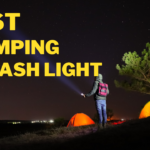With a pop-up camper, you can experience the great outdoors and immerse yourself in nature without giving up the conveniences of home. But as any seasoned camper knows, the pleasure of being outside can be diminished by chilly evenings. Here’s where a trustworthy pop-up camper heater shines.
A reliable heater ensures the weather does not control your camping in the cold. Its ability to offer warmth is not just a luxury but also a need for a relaxing and joyful camping experience. We are exploring the details of pop-up camper heaters. Choosing the best heating option is crucial for your camping trip.
You must first grasp the larger context. Adequate heating is vital for pop-up campers. Then, you can delve into the details of pop-up camper heaters. Pop-up campers are smaller than regular RVs and provide a more personal camping experience. But there are drawbacks to this compactness, particularly in terms of keeping a comfortable temperature.
The appropriate heating solution can be crucial when venturing on a winter camping trip or spending a cold night in the mountains. This post will walk you through the options. It will cover how pop-up camper furnaces work and how to replace pop-up camper heaters. It will also cover other non-electric heating options. When you’re done, you’ll know exactly how to pick, install, and get the most out of your pop-up camper heater to enjoy warmth and comfort outside.
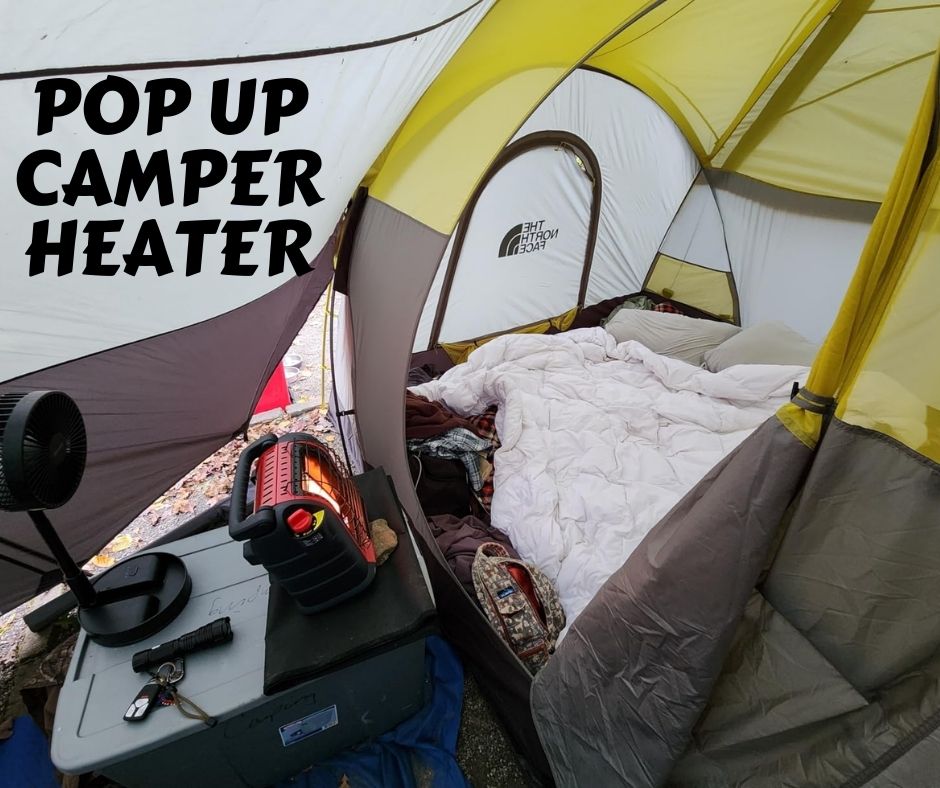
Choosing the Right Pop up Camper Heater
When it comes to selecting the perfect pop-up camper heater, navigating through the myriad of options requires a thoughtful approach. Consider the following factors to ensure that your choice aligns seamlessly with your camping needs.
1. Pop up camper heater replacement options
Pop-up camper heaters, like any other appliance, may need replacement over time. Understanding the available replacement options is crucial for maintaining a consistent and efficient heating system in your camper. Explore the latest models in the market, taking into account technological advancements, energy efficiency, and compatibility with your camper’s specifications.
Upgrading to the latest model not only ensures better performance but also often brings additional features that enhance your overall camping experience. Look for heaters with improved safety features, user-friendly controls, and easy maintenance.
2. Super battery-powered heaters for extended usage
For campers who relish the freedom of off-grid adventures, super battery-powered heaters emerge as a compelling choice. These heaters, equipped with advanced battery technology, provide extended usage without the need for a continuous power source. Consider factors such as battery capacity, charging time, and overall lifespan when evaluating these options.
Super batteries have revolutionized the camping experience, allowing you to enjoy a cozy environment without being tethered to electrical hookups. Delve into reviews and user experiences to find a battery-powered heater that strikes the right balance between portability and extended run time.
3. Exploring electric ceramic heater choices
Electric ceramic heaters represent a popular and energy-efficient choice for pop-up campers. Their compact size and quick heating capabilities make them ideal for smaller spaces. When exploring electric ceramic heater options, focus on factors such as wattage, portability, and safety features.
Look for heaters with adjustable thermostat settings, multiple heat levels, and overheat protection. Compact designs that facilitate easy storage in your pop-up camper are also worth considering. Electric ceramic heaters offer a reliable and convenient solution, especially when you have access to electrical power during your camping trips.

Comparing run time and energy efficiency for various heaters
One of the critical aspects of choosing the right pop-up camper heater is understanding its run time and energy efficiency. Different heaters operate on varying fuel sources or power inputs, impacting both their longevity and overall environmental impact.
1. Run Time:
Evaluate the estimated run time of the heater under different conditions. This information is vital, especially if you plan on extended camping trips or find yourself in areas with unpredictable weather. Super battery-powered heaters, for instance, often boast longer run times, providing continuous warmth without frequent recharging.
2.Energy Efficiency:
Consider the energy efficiency of the heater, keeping in mind its impact on both your camping experience and the environment. Energy-efficient heaters not only prolong battery life but also reduce the need for frequent fuel replenishment in traditional models. Look for heaters with energy-saving features and certifications that align with your commitment to sustainable camping practices.
In the quest for the perfect pop-up camper heater, weighing these factors will lead you to a choice that harmonizes with your camping style, ensuring warmth and comfort throughout your outdoor camping adventures.
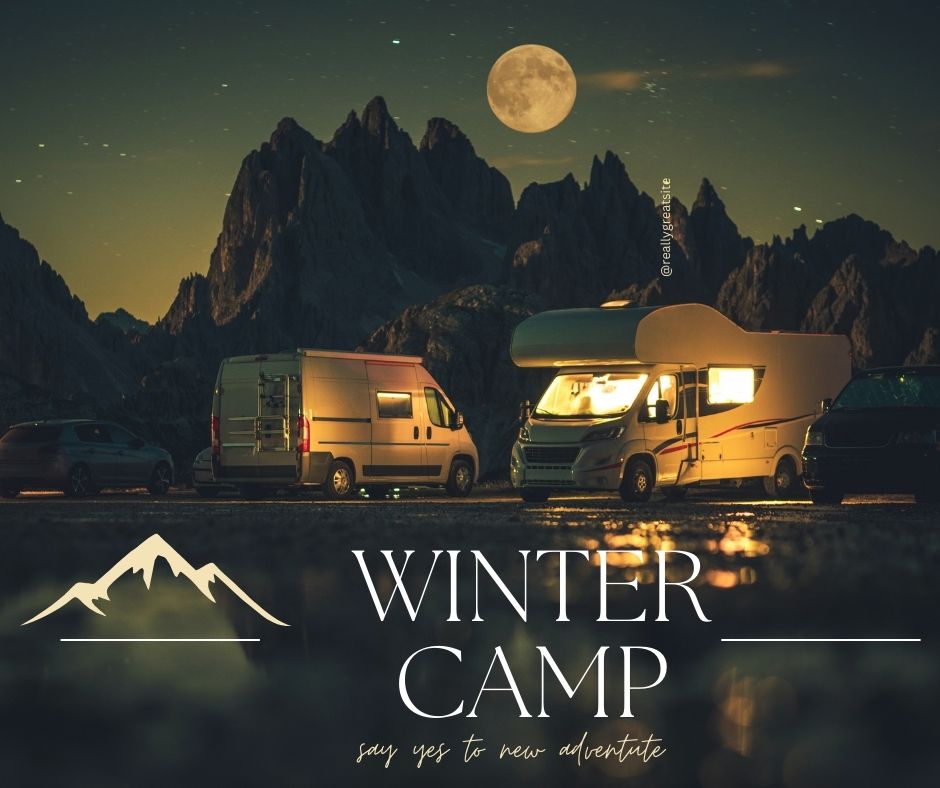
Pop-Up Camper Furnace Operation
The pop-up camper furnace stands as a reliable ally in keeping you warm during chilly nights in the great outdoors. Understanding how this essential component operates is key to maximizing its efficiency and ensuring a cozy camping experience.
Combustion Process:
At the heart of the pop-up camper furnace operation lies the combustion process. Most pop-up camper furnaces utilize propane as a fuel source. When the thermostat signals a need for heat, the furnace ignites the propane, creating a controlled flame. The heat produced is then circulated through the camper via a fan, warming the interior.
Thermostat Control:
Modern pop-up camper furnaces are equipped with thermostats, allowing campers to set and maintain their desired temperature. This feature not only enhances comfort but also contributes to energy efficiency by preventing unnecessary heating.
Ductwork and Ventilation:
Ductwork and ventilation systems ensure that the warm air generated by the furnace is evenly distributed throughout the camper. Properly positioned vents and ducts help maintain a consistent and comfortable temperature in every corner of the space.
Safety Features:
Pop-up camper furnaces come with safety features to protect both you and your camper. These may include flame sensors, temperature limit switches, and carbon monoxide detectors. Understanding these safety mechanisms ensures a worry-free operation, allowing you to enjoy the warmth without concerns.
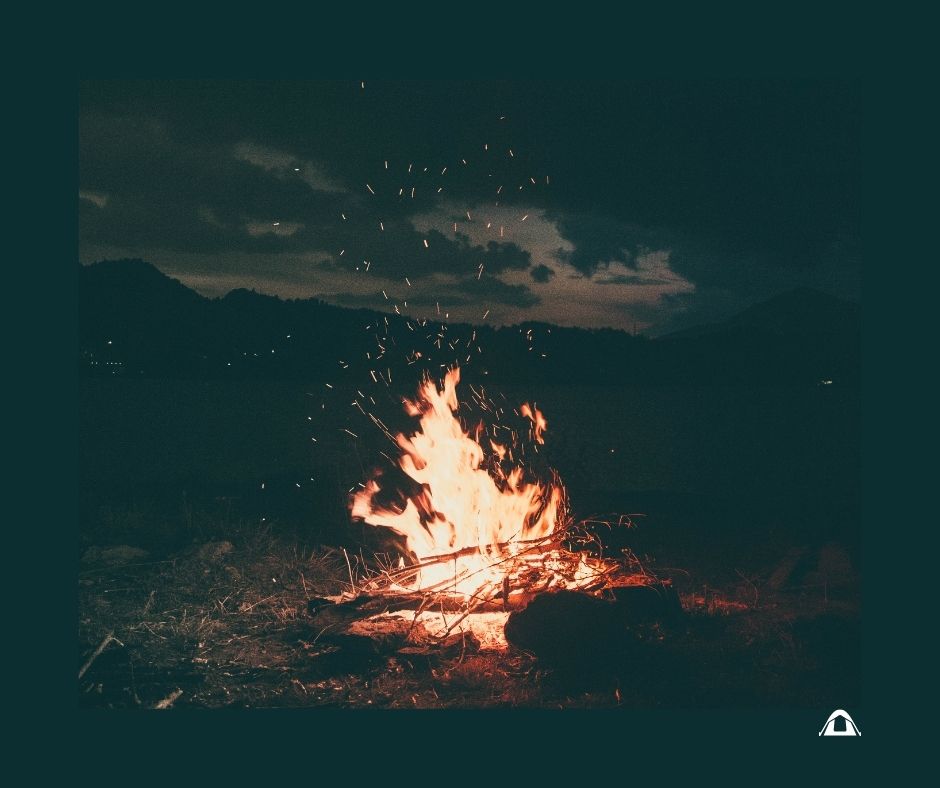
HOW TO LIGHT THE FURNACE IN POP UP CAMPERS
Step 1: Preparation
Before attempting to light the furnace in your pop-up camper:
- Ensure that the propane supply is turned on.
- Check the gas valve and, if appropriate, the propane tank to verify that they are correctly attached and have enough fuel.
- Ensure the space surrounding the furnace is well-ventilated and free of combustible items.
Step 2: Access the Furnace
Locate the furnace access panel on your pop-up camper. This is typically found on the exterior of the camper. Remove the panel carefully to reveal the furnace components. You should see the furnace burner assembly, control module, and ignition system inside.
Step 3: Set the Thermostat
Set the thermostat to a setting more significant than the camper’s current interior ambient temperature. This will signal the furnace to start the ignition process. Modern pop-up camper furnaces often come with a thermostat that allows you to control the desired temperature for comfort.
Step 4: Ignite the Furnace
Once the thermostat is set, listen for the furnace to ignite. You may hear a clicking sound as the ignition system sparks. Keep an eye on the burner assembly – you should see the flame torch. This may take a few moments as the system goes through its startup sequence.
Step 5: Monitor and Adjust
Monitor the flame once the furnace is lit to ensure it burns consistently and evenly. If you notice any irregularities, such as flickering or unusual sounds, it’s crucial to investigate and address the issue promptly. Adjust the thermostat as necessary to get the ideal temperature inside the camper.
By following these five steps, you can safely and efficiently light the furnace in your pop-up camper, ensuring a warm and comfortable camping experience. For manufacturer recommendations and guidelines, refer to your camper’s specific furnace manual.

Comparing run time and energy efficiency for various heaters
While the pop-up camper furnace is designed for efficient heating, a few tips can further enhance its performance, ensuring optimal functionality during your camping adventures.
Regular Maintenance:
Schedule routine maintenance checks for your pop-up camper furnace. This includes cleaning or replacing the air filter, inspecting the burner assembly, and ensuring that vents and ducts are free from obstructions. Regular maintenance not only improves efficiency but also prolongs the life of the furnace.
Proper Insulation:
Enhance the effectiveness of your pop-up camper furnace by ensuring proper insulation. Seal any gaps or cracks in windows, doors, and other potential draft sources. Adequate insulation reduces heat loss, allowing the furnace to maintain a comfortable temperature with less effort.
Thermostat Management:
Practice thoughtful thermostat management. While it’s tempting to crank up the heat when entering a cold camper, consider gradually adjusting the temperature to allow the furnace to work efficiently without unnecessary strain. This approach not only conserves energy but also prevents sudden temperature fluctuations.
Utilize Ventilation Wisely:
Balance ventilation to ensure a constant supply of fresh air without compromising heating efficiency. Proper ventilation prevents the buildup of carbon monoxide and promotes a healthy indoor environment. When using the furnace, crack a window slightly to facilitate air exchange.
Invest in a Programmable Thermostat:
Consider upgrading to a programmable thermostat for your pop-up camper furnace. This allows you to set specific temperature schedules, optimizing heating cycles based on your camping routine. Programmable thermostats contribute to energy conservation by only activating the furnace when needed.
Understanding the mechanics of pop-up camper furnace operation and implementing these tips will not only keep you warm and comfortable but also contribute to a more efficient and sustainable camping experience.

How to Heat a Pop-Up Camper Without Electricity
When venturing into the off-grid realms of camping, the absence of electrical hookups need not leave you in the cold. Embracing alternative heating methods ensures a cozy haven within your pop-up camper, even when electricity is not at your disposal.
1. Super battery-powered heaters as an electricity-free option
Super battery-powered heaters emerge as a versatile solution for off-grid heating. These compact and efficient devices leverage advanced battery technology to provide a reliable heat source without relying on electrical hookups. With extended run times, super battery-powered heaters are well-suited for prolonged off-grid adventures.
Explore models with high-capacity batteries and fast-charging capabilities. Investing in a super battery-powered heater not only ensures warmth during your camping escapades but also aligns with the sustainable and eco-friendly ethos of off-grid living.
2. Exploring non-electric heating alternatives
Non-electric heating alternatives offer a diverse range of options for campers seeking independence from electrical grids. Consider the following alternatives to keep your pop-up camper warm without tapping into traditional power sources:
- Wood-Burning Stoves: Wood-burning stoves provide a rustic and efficient way to heat your pop-up camper. Designed specifically for compact spaces, these stoves utilize wood as a fuel source, offering both warmth and a charming ambience. Ensure proper installation and follow safety guidelines to enjoy the benefits of a wood-burning stove.
- Propane Heaters:
Portable propane heaters are a tried-and-true solution for off-grid heating. These heaters are portable and simple to operate; they attach to gas tanks and offer a dependable source of heat. When utilizing propane heaters, ventilation is crucial to preventing carbon monoxide buildup.
- Catalytic Heaters: Without using an open flame, catalytic heaters generate heat through chemical reactions. These heaters are efficient and can operate on various fuels, including propane. They are a safe and silent alternative, making them suitable for both indoor and outdoor use.

Practical tips for staying warm without relying on electrical hookups
Ensuring warmth in your pop-up camper without the luxury of electrical hookups requires a strategic approach. Implement these practical tips to maximize your off-grid heating experience:
- Insulation is Key: Prioritize insulation to retain heat within the camper. Invest in thermal curtains, seal any gaps or drafts, and use rugs or carpets to cover cold floors. Well-insulated walls and windows significantly contribute to maintaining a comfortable temperature.
- Layered Bedding: Keep the chill at bay by layering your bedding. Use warm blankets, sleeping bags, and thermal sheets to create a cosy sleep environment. The layering approach allows you to adjust your insulation based on the fluctuating temperatures of the night.
- Hot Water Bottles: Utilize hot water bottles as a simple yet effective heat source. Boil water on your camp stove and pour it into a heat-resistant bottle. Place the warm bottles strategically around the camper, such as in your bedding or near seating areas, to radiate comforting heat.
- Cooking for Warmth: Turn your cooking activities into a source of warmth. Prepare hot meals on your camp stove, not only for sustenance but also to raise the ambient temperature within the pop-up camper. Soups, stews, and warm beverages become dual-purpose delights.
- Dress in Layers: Personal insulation matters just as much as camper insulation. Wear thermal garments to increase warmth and layer your clothes to trap body heat. If you want an additional layer of comfort on chilly nights, think about wearing heated clothing options.
By incorporating these alternative heating methods and practical tips, you can transform your pop-up camper into a snug refuge, even in the absence of electrical hookups. Embrace the simplicity and sustainability of off-grid heating for a genuinely immersive camping experience.
Pop-Up Camper Heater Installation
Although installing a new pop-up camper heater may seem like a difficult undertaking, it can be a worthwhile and economical endeavor with the right assistance. To ensure a seamless installation process, follow these detailed instructions:
Considerations for DIY Installation:
a. Assess Your Skill Level: Before diving into the installation process, evaluate your DIY skills. Installing a pop-up camper heater involves working with electrical and propane systems, so ensure you are comfortable handling such tasks.
b. Choose the Right Heater: Choose a heater that will satisfy your heating requirements and blend in well with the decor of your pop-up camper. Take into account elements like efficiency, size, and power supply.
c. Gather Necessary Tools: Equip yourself with the essential tools, including screwdrivers, pliers, pipe wrenches, and any specialized tools recommended by the heater manufacturer.
d. Read the Instruction Manual: Take the time to thoroughly read the manufacturer’s installation manual. This ensures that you are familiar with the specific requirements and recommendations for your chosen pop-up camper heater.
e. Check Local Regulations: Verify if there are any local regulations or safety codes governing the installation of heaters in recreational vehicles. Compliance with these regulations is crucial for both Safety and legal reasons.
Hiring a Professional for Pop-Up Camper Heater Installation: While the prospect of a DIY installation can be enticing, there are instances where hiring a professional becomes the more prudent choice:
a. Complex Systems: If your pop-up camper has intricate systems, such as integrated HVAC or complex electrical configurations, seeking professional assistance can ensure a seamless integration without compromising Safety.
b. Warranty Considerations: Some pop-up camper heaters come with warranties that may be voided unless installed by a certified professional. Hiring an expert ensures that you maintain the validity of the warranty.
c. Safety First: If you feel uncomfortable working with propane or electricity, or if you lack the necessary expertise, it’s always safer to entrust the installation to a professional who can navigate potential hazards with ease.
d. Time and Convenience: By hiring an expert, you may focus on other areas of your camping preparations and save time and effort. A seasoned installer can complete the job efficiently and effectively.
Remember, whether you choose the DIY route or opt for professional installation, prioritizing Safety and adherence to guidelines is paramount. A well-installed pop-up camper heater ensures not only warmth during your camping trips but also peace of mind in knowing that your heating system is set up for optimal performance.
Ensuring Longevity and Efficiency
Your pop-up camper heater serves as a reliable companion during chilly nights, but, like any piece of equipment, it demands proper care to ensure it performs optimally throughout its lifespan. Here are some crucial maintenance tips to keep your pop-up camper heater running smoothly and efficiently:
a. Regular Cleaning: Consistent cleaning is necessary to maintain high efficiency. The build-up of dust and filth may eventually reduce the heater’s efficacy. Vents and burners are among the easily accessible surfaces that may be cleaned using compressed air or a soft brush.
b. Inspect for Leaks: Given that many pop-up campers use gas-powered heaters, it’s crucial to check for any potential gas leaks. Conduct a thorough inspection of gas lines and connections, and if you detect any issues, address them promptly or seek professional assistance.
c. Check the Ignition System: The ignition system is a critical component. Ensure that the ignition is sparking correctly and that there are no loose or damaged wires. If you notice any issues, consult your heater’s manual or a technician for guidance.
d. Monitor the Exhaust System: For safety, an efficient exhaust system is essential. Make sure there is adequate ventilation, and periodically check the exhaust vents for clogs. A significant risk might arise from carbon monoxide accumulation caused by blocked vents.
e. Inspect the Thermostat: The thermostat regulates the temperature inside your pop-up camper. Check for accuracy by comparing the temperature displayed on the thermostat with an external thermometer. Calibrate or replace the thermostat if needed.
f. Secure Proper Ventilation: Adequate ventilation is crucial to prevent condensation and ensure the heater operates efficiently. Check that vents and air intakes are unobstructed, allowing for proper airflow.
Troubleshooting Common Issues and Quick Fixes
Despite meticulous maintenance, occasional issues may arise with your pop-up camper heater. Being prepared to troubleshoot common problems can save your camping trip from turning into a chilly ordeal. Here are some common issues and quick fixes:
No Heat Output:
- Check the propane supply and ensure the gas valve is open.
- Inspect the burner for clogs and clean if necessary.
- Make sure the desired temperature is selected on the thermostat.
Unusual Smells or Sounds:
- Gas odors may indicate a leak; turn off the heater immediately and seek professional help.
- Loose components may cause unique sounds. Inspect and tighten any loose parts.
- Ignition Problems:
- Make sure there is no debris and that the ignition system is clean.
- Check for proper electrode spacing and alignment.
Inconsistent Temperature:
- Clean or replace air filters if applicable.
- Verify the functionality of the thermostat and, if necessary, substitute it.
Incorporating these maintenance practices and troubleshooting tips into your routine ensures that your camping experiences remain comfortable and worry-free while also extending the life and efficiency of your pop-up camper heater.
HOW MUCH DOES A POP UP CAMPER WEIGH
Everything you need to know about it Typically a pop-up camper will weigh 1,000 to 3,000 pounds (450 to 1,360 kilograms) on average. They might be a tad lighter on smaller models and heavier with more amenities for larger versions It is always advisable to refer to the specifications mentioned by the manufacturer for that particular model.
Last Verdict
In summary, navigating the world of pop-up camper heaters has unveiled the crucial importance of a reliable heating solution for a seamless outdoor experience. From exploring various options such as replacements, super battery-powered heaters, and electric ceramic alternatives to understanding the nuances of furnace operation and off-grid heating techniques, we’ve equipped you with a comprehensive guide. Our maintenance insights and troubleshooting tips ensure that your chosen heater remains efficient and reliable for countless camping adventures. As you embark on the quest to choose the perfect pop-up camper heater, consider your camping style, power sources, installation preferences, and long-term costs. Whether you’re a frequent off-grid explorer or a weekend camper, making an informed decision will not only keep you warm but also enhance the overall enjoyment of your outdoor journeys. Here’s to cozy nights, unforgettable camping trips, and the warmth that a well-chosen pop-up camper heater brings to your travels.
Mustakim Hasan
As an engineer with a keen eye for detail, I combines their technical expertise with a fervent passion for the outdoors. At bestcampgears.com, I share in-depth reviews on the latest camping, outdoor, and sports products, offering readers valuable insights and reliable recommendations. Drawing from personal experiences and a love for nature, I also provides practical tips, tricks, and guidance to enhance your outdoor adventures. Whether you're a seasoned camper or a budding outdoor enthusiast, [Your Name]'s blog is your go-to resource for all things camping and outdoors.
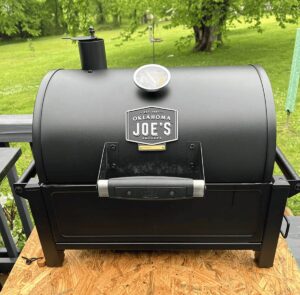
Oklahoma Joe’s® Rambler Charcoal Grill Review: A Comprehensive Guide
The Oklahoma Joe’s® Rambler Charcoal Grill is a portable tabletop grill. It’s versatile and promises great grilling experiences. You can use it at home or on a camping trip. Our team
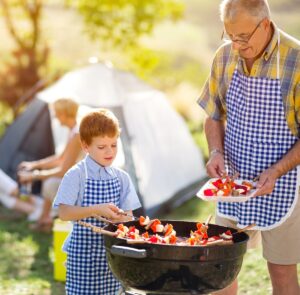
Best Portable Smoker for Camping: Top Picks for Outdoor Cooking
Who doesn’t like some fresh, smoky, hot BBQ during camping? Arranging a BBQ during your camping days will take the enjoyment to another level. The smoky smell will surely increase
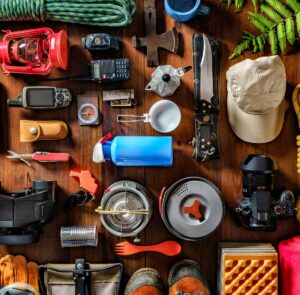
50 Most Forgotten Camping Items: Essential Gear You Always Forget to Pack
Camping is the best way to relax and escape the busy and exhausting urban life. You must ensure you have taken all the necessary camping gear during camping. However, in

how long is summer camp ?
how long is summer camp? Though a summer camp is normally 3 to 8 weeks long, to answer this question you need to consider some other factors as well which

The best camping saws 2024: portable, lightweight, and effective
When it comes to camping, having the right tools can make all the difference in your outdoor experience. One essential tool that every camper should have in their arsenal is
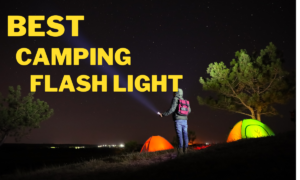
The Ultimate Guide to the Best Camping Flashlights for 2024
When camping, one essential item should always be noticed: a reliable flashlight. A good flashlight can make all the difference. You might need a headlamp to navigate dark trails at







